This sunomono comes together in 20 minutes! Crisp cucumbers and wakame seaweed are tossed in a light, refreshing dressing that complements rich dishes.
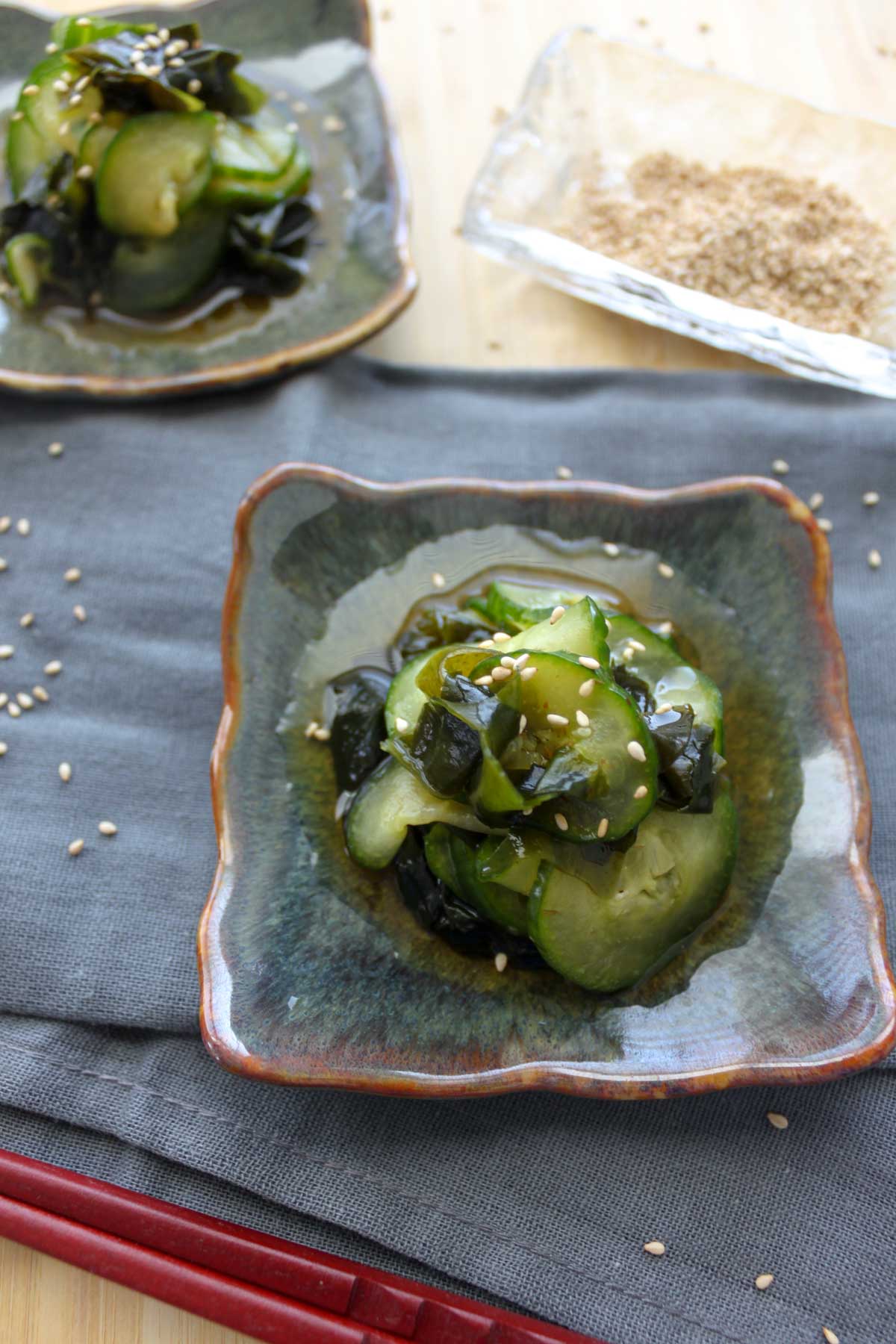
This recipe is super easy—just make the dressing, prep the cucumber and wakame, mix, and you’re done!
I love sunomono because it’s crisp, tangy, sweet, and refreshing. It pairs well with oily dishes like teriyaki chicken and karaage. Hope you enjoy it too! 🙂
💡New to Japanese cooking? Check out my step-by-step guide to Japanese cooking!
Why You'll Love This Recipe
- Easy and Quick: Perfect for when you need an extra side dish but don’t have time for something complicated.
- Adds Crunch to Your Meal: The crisp cucumbers make sunomono a great choice when you want to add texture.
- Perfect Balance of Tanginess and Sweetness: I prefer a tangier flavor with less sweetness, so I used only mirin to achieve the perfect balance.
- Easy to Customize: This is a basic recipe, so you can add your own variations, such as crab meat or octopus.
Notes on Ingredients
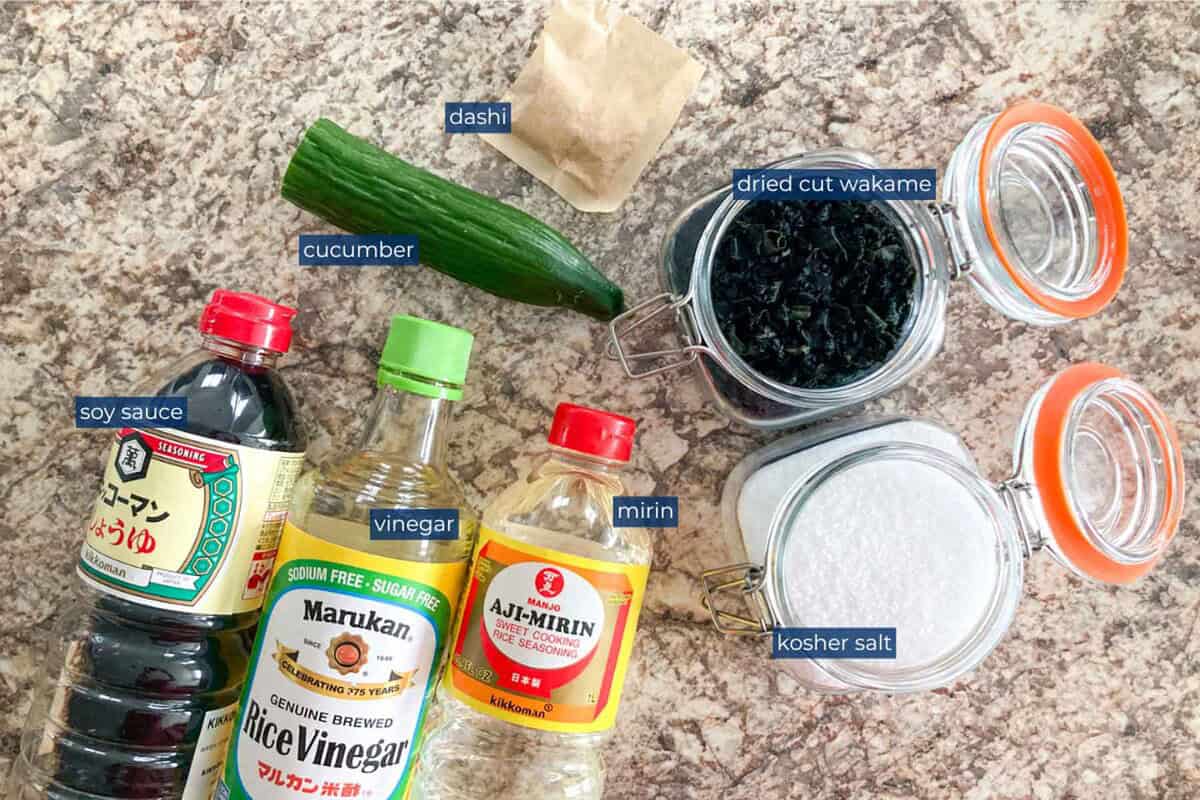
- Cucumber: Use Japanese, Persian, English, or seedless cucumbers for their crisp texture. They have fewer seeds and softer skins compared to American cucumbers.
- Dried wakame seaweed: This adds a delicious ocean flavor to the dish, and I highly recommend including it for both its taste and health benefits. However, you can omit it if you’re not a fan of wakame.
- Mirin: This adds not only sweetness but also umami to the dish. If you don’t have mirin, you can substitute 1 tablespoon of mirin with 1 tablespoon of sake and 1 teaspoon of sugar.
- Dashi: You can make your own dashi from scratch or use dashi powder/pouch. If you use dashi powder, be sure to choose a high-quality one made only with natural ingredients. My all-time go-to is Kayanoya Dashi.
- Vinegar: I usually use rice vinegar for Japanese dishes, but you can also use other types of vinegar, such as apple cider vinegar, to add a twist.
Substitutions and Variations
- Other Add-On Ideas: Crab meat (kani sunomono), boiled octopus (tako sunomono), boiled shrimp (ebi sunomono), glass noodles, enoki mushrooms, daikon radish, chikuwa (fish cake), tomatoes, cabbage.
- Gluten-Free Version: Use gluten-free soy sauce and dashi.
- Vegan Version: Choose vegan-friendly add-ins such as glass noodles and cabbage, or simply follow the basic cucumber and wakame recipe!
How to Make Sunomono
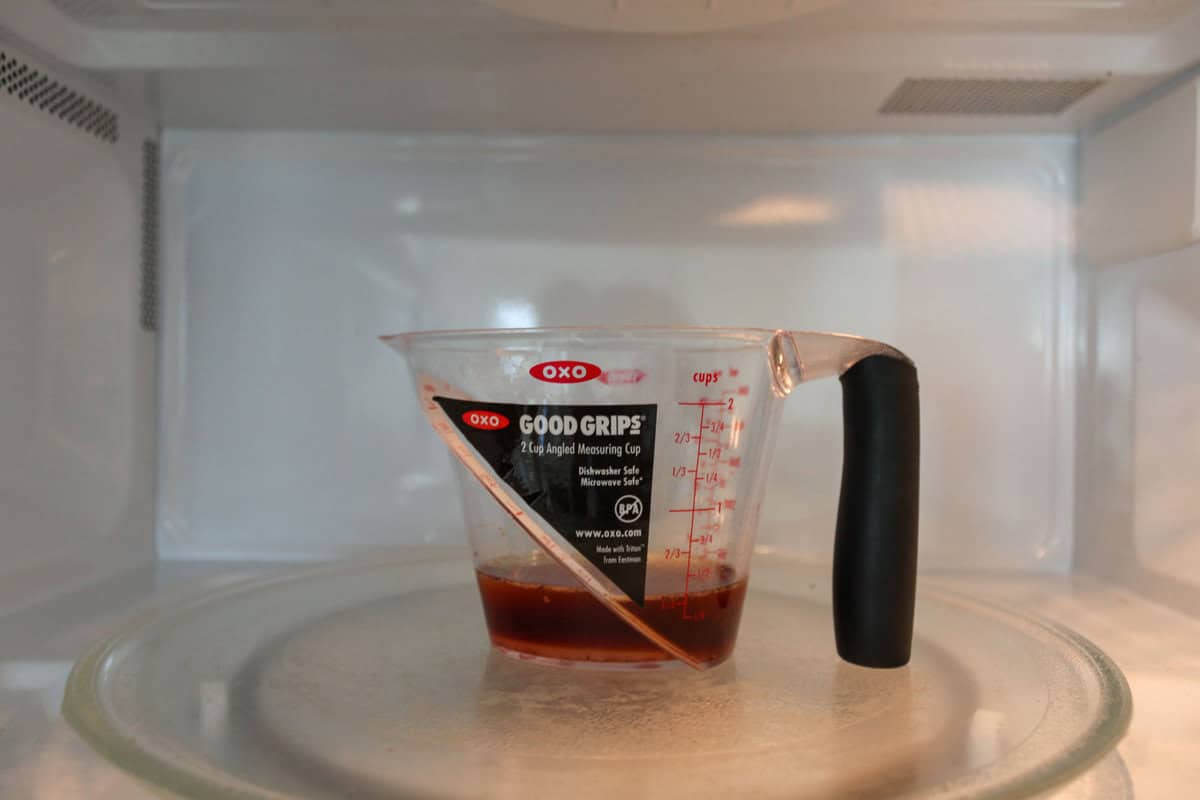
Step 1: Mix all dressing ingredients and microwave them for about 1 minute
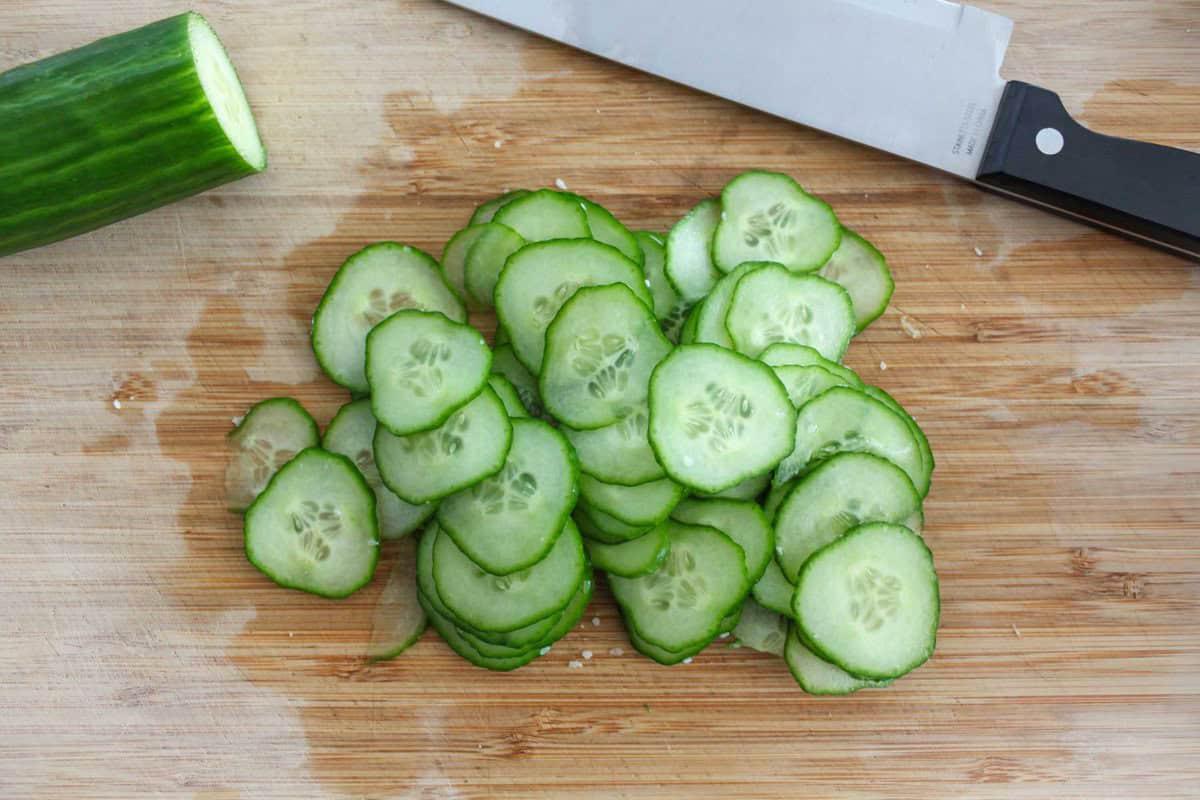
Step 2: Cut a cucumber and massage with salt. Let it sit for 10 minutes
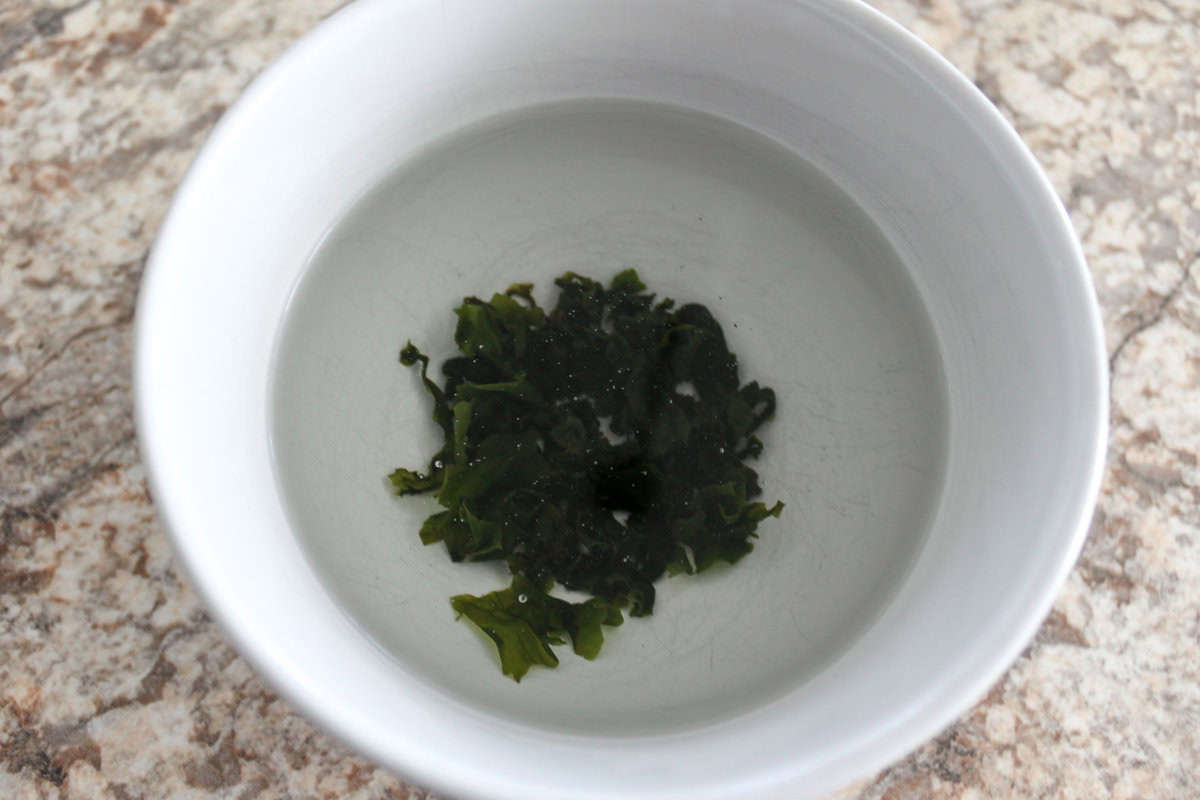
Step 3: Soak dried wakame in water and let it sit for 5 minutes
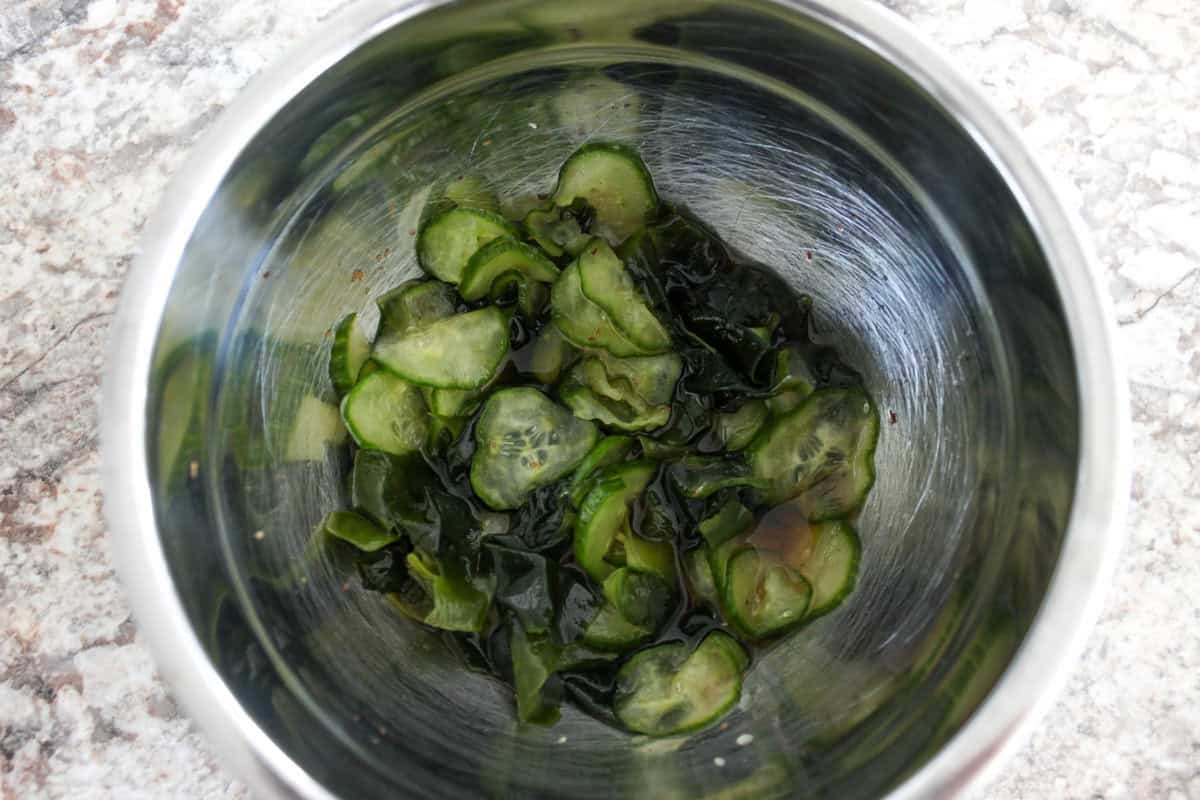
Step 4: Squeeze the cucumber and wakame with your hands, then mix everything together
Kurumi's Tips
- Types of Cucumbers: Use Japanese, Persian, English, or seedless cucumbers for their crisp texture. These varieties have fewer seeds and softer skins compared to American cucumbers.
- Squeeze the cucumbers and wakame well: This step is important to prevent the dressing from becoming watery and bland and to maintain the crunchy texture.
What to Serve with Sunomono
Sunomono is light and refreshing, making it a perfect pairing for heavier main dishes like teriyaki chicken or deep-fried foods.
This is an example meal that follows Ichiju-Sansai format:
Storage Instructions
Store the leftovers in an airtight container in the fridge for up to 4 days.
FAQs
Sunomono, Japanese cucumber salad, refers to any salad that is made with vinegar in Japan (“Su” means vinegar), and it’s usually served as a side with other dishes.
No, you don’t need to peel Japanese, Persian, English, or seedless cucumbers because their skin is softer than that of American cucumbers. However, you can create a striped design by peeling parts of the skin if desired.
Sunomono refers to a variety of dishes that are salads seasoned with vinegar.
Namasu is a type of sunomono, typically made with julienned daikon radish and carrots seasoned with vinegar, though some variations are just called sunomono. Essentially, they are quite similar!
Tsukemono refers to pickled vegetables that are meant to last a long time.
More Japanese Side Dish Recipes
Looking for other recipes like this? Try these:
💌 If you tried this recipe and liked it, I’d love to hear from you! Leave a comment and review below, or send a photo of your dish to my email. I’d be so happy to see your creation!
📖Recipe
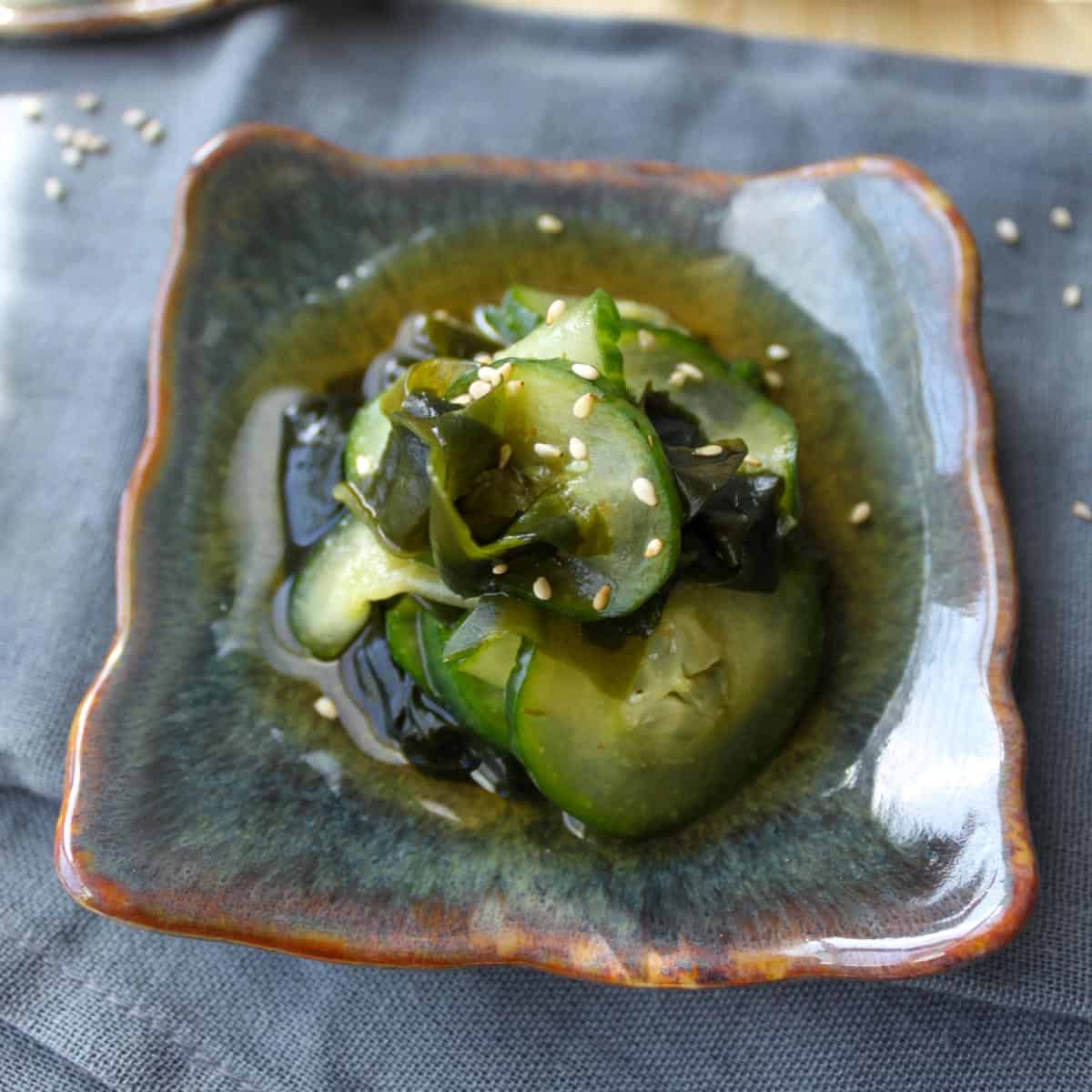
Sunomono (Japanese Cucumber Salad with Seaweed)
Ingredients
Method
- Make the dressing: In a medium microwave-safe bowl, mix 3 tablespoons dashi, 2 tablespoons rice vinegar, 2 tablespoons mirin, 1.5 teaspoons soy sauce, and ¼ teaspoon kosher salt. Microwave for 1 minute, then give it a taste. If it feels too sour, add a little granulated sugar. Let it cool while you prep the other ingredients.
- Prep the cucumber: Thinly slice ½ Japanese, Persian, English, or seedless cucumbers into coins, then sprinkle with ¼ teaspoon kosher salt and gently massage it with your hands. Let it sit for about 10 minutes until it releases water.
- Prep the wakame: Soak ½ tablespoon cut dried wakame in a bowl of water for about 5 minutes. If using whole wakame, cut it into bite-sized pieces after soaking.
- Assemble the salad: Squeeze the excess water out of the cucumbers and wakame with your hands, then toss them in a bowl with the dressing from step 1. Give it a good mix, and if you're adding any optional ingredients (see Note 3), now's the time!
- Chill and serve: If the dressing is still warm, let it cool in the fridge until it’s chilled. Serve with the dressing and enjoy!
Notes
- (Note 1) Types of Cucumbers: Japanese, Persian, English, or seedless cucumbers work best for their crisp texture. They have fewer seeds and softer skins than American cucumbers. You can usually find them at your local grocery store or an Asian market.
- (Note 2) Dashi Powder: If you're using dashi powder, go for a high-quality one made with natural ingredients. My favorite is Kayanoya Dashi.
- (Note 3) Variations: Want to switch things up? Check out the Substitutions and Variations section above for add-on ideas!
📌Pin This Recipe For Later!
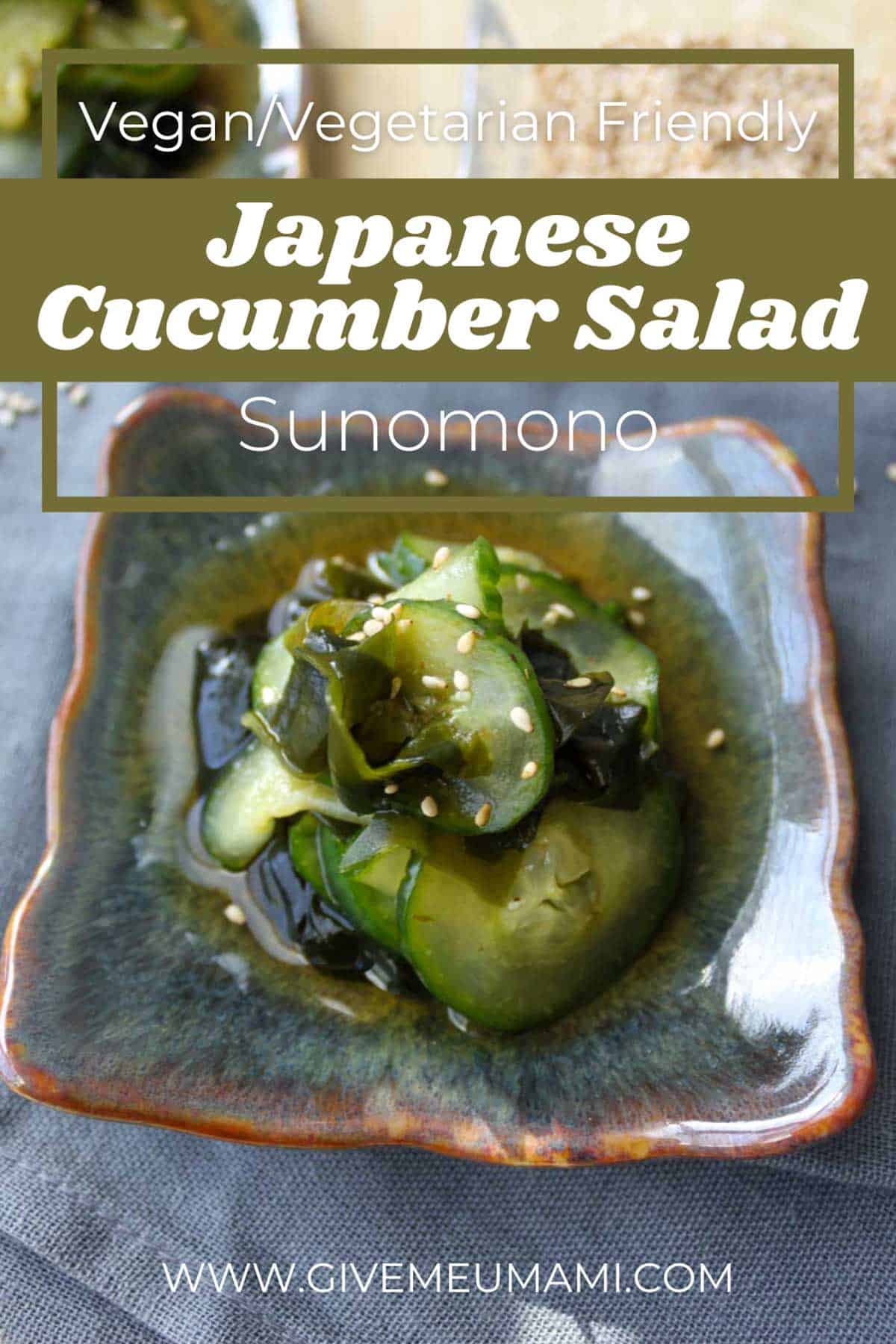




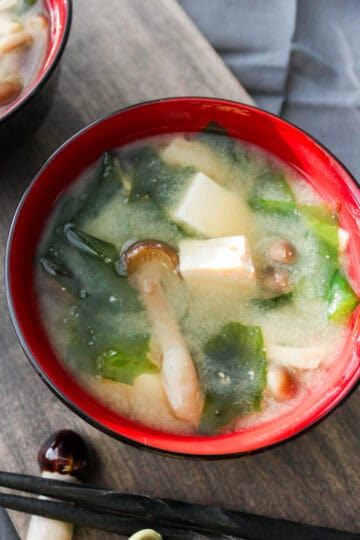
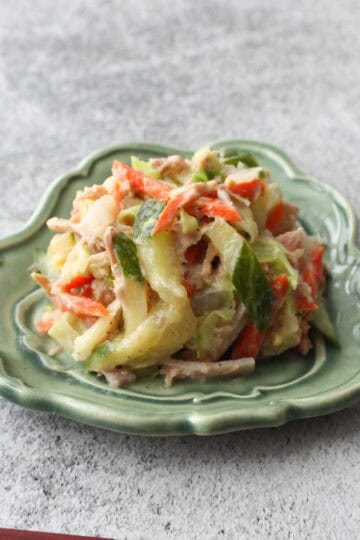
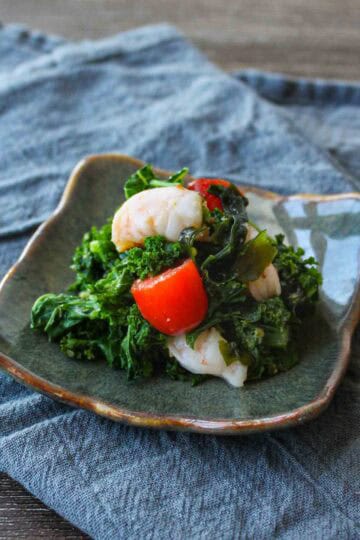
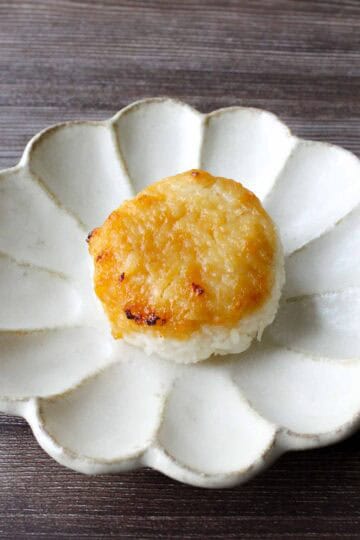
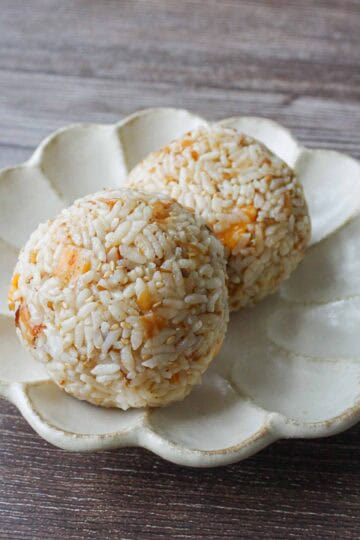
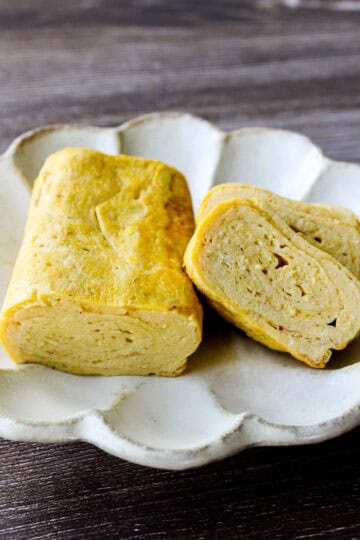
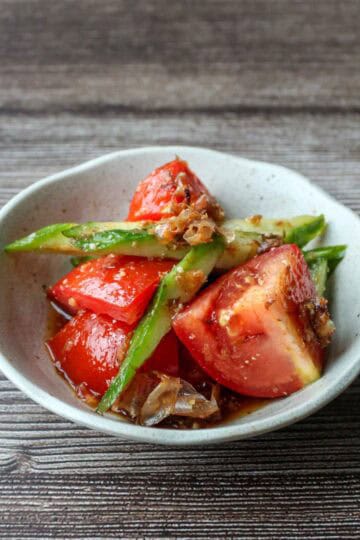
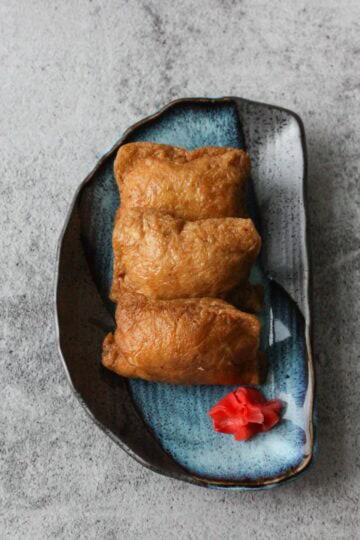

Kurumi says
I served this sunomono with pork katsu (stuffed with shiso and cheese!) last night, and it was so refreshing after a bite of the rich, crispy katsu. Because I made the katsu in an air fryer, I had time to whip up this sunomono while waiting! I hope you enjoy it as a quick and easy side dish that adds a nice, refreshing contrast to your meal 😊